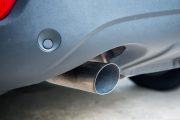
Could your trash and certain waste products be the answer to reducing the dreaded greenhouse-gas (GHG) emissions from aircraft engines? Well, yes. Sustainable aviation fuel (SAF) could very well be an immediate answer to our government’s demand for GHG reduction.
SAF is made from renewable biomass and waste resources that have the potential to deliver the performance of petroleum-based jet fuel but with a fraction of its “carbon footprint.” SAF can be blended with fossil fuel and serve as a drop-in fuel to be used with existing aircraft and engine technologies. And it can also be transported via the current supply infrastructure. Most SAF reduces CO2 emissions by up to 80 percent compared with fossil fuels.
The Office of Energy Efficiency & Renewable Energy recently reported:
An estimated 1 billion dry tons of biomass can be collected sustainably each year in the United States, enough to produce 50–60 billion gallons of low-carbon biofuels. These resources include:
• Corn grain
• Oil seeds
• Algae
• Other fats, oils, and greases
• Agricultural residues
• Forestry residues
• Wood mill waste
• Municipal solid waste streams
• Wet wastes (manures, wastewater treatment sludge)
• Dedicated energy crops.
This vast resource contains enough feedstock to meet the projected fuel demand of the U.S. aviation industry, additional volumes of drop-in low carbon fuels for use in other modes of transportation, and produce high-value bioproducts and renewable chemicals.
Synthetic kerosene, cooking oils, biomass, and municipal waste are the best options for producing SAF.
Corporate Knights reported:
Oils and fats are currently the most accessible option, according to Bradley Saville, a professor at the University of Toronto in the school’s Department of Chemical Engineering and Applied Chemistry.
“There’s a lot of growth where you’re seeing refineries being reconfigured because it’s low-cost and the infrastructure required for production is perfectly aligned with existing oil refinery technology,” he says. “The compatibility makes it a very attractive initial pathway.”
… Dutch airline KLM has been viewed as a trailblazer for its use of cooking oil as fuel on a commercial flight in 2010. One year later, it scheduled more than 200 trial flights between Paris and Amsterdam using biofuel made from used cooking oil. Lufthansa and Continental Airlines followed suit shortly after.
The site continued:
Saville says that biomass, made from algae, crop residues, animal waste, forestry residue, and municipal waste, could also have big potential as an aviation fuel.
“If you look to crop and forest residue and leave just the right amount behind to promote good soil quality, you could replace a fairly high percentage of jet fuel,” he says. “Then with municipal solid waste, you’re solving a waste problem and turning it into energy.”
Biomass has the same 80 to 90% reduction as used oils but comes at a slightly higher production cost, at US$1,800 to $1,900 per ton. This is one barrier to implementation, Saville explains, and one reason why these fuels are in short supply. Unlike with waste oils, the infrastructure transition isn’t as seamless and supply chains aren’t set up to source and deliver on this in a big way, he adds.
Then there is synthetic kerosene, which is a sustainable fuel in the earliest stages of development and implementation. It is known as e-kerosene or power-to-liquid, and “might show the most promise in terms of its ability to reduce the airline industry’s carbon footprint. It is made by combining hydrogen and carbon dioxide. If the hydrogen is generated using renewable electricity (known as green hydrogen) and the carbon dioxide is captured from the atmosphere, models have shown it to have zero, or very close to zero, carbon emissions.”
Last year, the Department of Energy (DOE), the Department of Transportation (DOT), and the Department of Agriculture (USDA) launched the Sustainable Aviation Fuel Grand Challenge. The challenge’s goal is to develop a commercially viable SAF that reduces GHG emissions by 50 percent compared to conventional fuel and to have this SAF meet 100 percent of aviation fuel demand by 2050.
The DOE awarded D3MAX nearly $500,000 as part of the challenge to design a pilot plant to validate technology for first-generation ethanol plants to produce ethanol from corn stover, which is then converted to SAF. D3MAX then used that grant to form SAFFiRE Renewables.
The SAF pilot plant project got the attention of Southwest Airlines, which recently announced it was investing in SAFFiRE Renewables and matching the DOE’s grant. Southwest CEO Bob Jordan stated about the investment, “SAF is critical for decarbonizing the aviation sector. This is a unique opportunity to invest in what we believe could be a game-changing technology that could facilitate the replacement of up to approximately 5 percent of our jet fuel with SAF by 2030, with the potential to significantly continue to scale beyond the decade. This first-of-its-kind investment is another step we are taking to address our environmental impact, and it also supports our efforts to partner with organizations and government entities to help our industry reach the goal of carbon neutrality by 2050.”
The successful future of alternative aviation fuels is on the horizon. Doc Brown in the film Back to the Future was on to something with his “flux capacitor” add-on called “Mr. Fusion” using garbage versus plutonium for fuel. Research and development of SAF is exciting, with the promise of this clean, cheap fuel.
Now if we can just get government out of the way, with their energy regulations picking winners and losers and subsidizing of research with taxpayer dollars.




